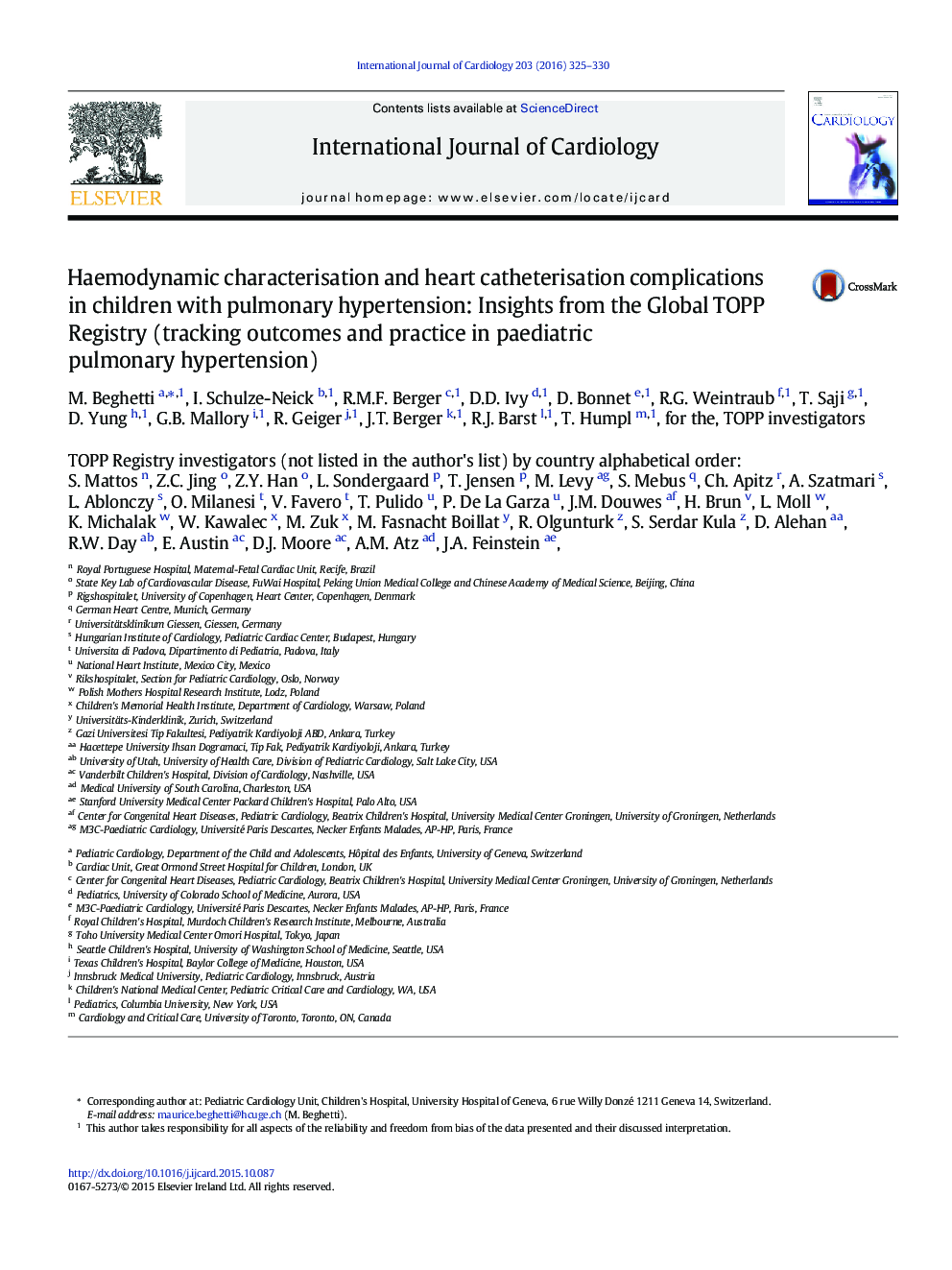| Article ID | Journal | Published Year | Pages | File Type |
|---|---|---|---|---|
| 5965605 | International Journal of Cardiology | 2016 | 6 Pages |
BackgroundThe TOPP Registry has been designed to provide epidemiologic, diagnostic, clinical, and outcome data on children with pulmonary hypertension (PH) confirmed by heart catheterisation (HC). This study aims to identify important characteristics of the haemodynamic profile at diagnosis and HC complications of paediatric patients presenting with PH.Methods and resultsHC data sets underwent a blinded review for confirmation of PH (defined as mean pulmonary arterial pressure â¥Â 25 mm Hg, pulmonary capillary wedge pressure â¤Â 12 mm Hg and pulmonary vascular resistance index [PVRI] of > 3 WU Ã m2). Of 568 patients enrolled, 472 who fulfilled the inclusion criteria and had sufficient data from HC were analysed. A total of 908 diagnostic and follow-up HCs were performed and complications occurred in 5.9% of all HCs including five (0.6%) deaths. General anaesthesia (GA) was used in 53%, and conscious sedation in 47%. Complications at diagnosis were more likely to occur if GA was used (p = 0.04) and with higher functional class (p = 0.02). Mean cardiac index (CI) was within normal limits at diagnosis when analysed for the entire group (3.7 L/min/m2; 95% confidence interval 3.4-4.1), as was right atrial pressure despite a severely increased PVRI (16.6 WU Ã m2, 95% confidence interval 15.6-17.76). However, 24% of the patients had a CI of < 2.5 L/min/m2 at diagnosis. A progressive increase in PVRI and decrease in CI was observed with age (p < 0.001).ConclusionIn TOPP, haemodynamic assessment was remarkable for preserved CI in the majority of patients despite severely elevated PVRI. HC-related complication incidence was 5.9%, and was associated with GA and higher functional class.
